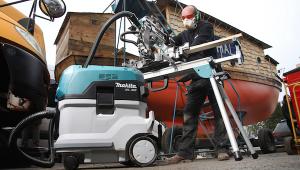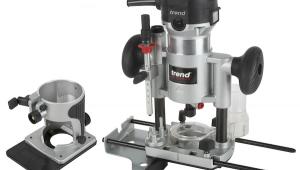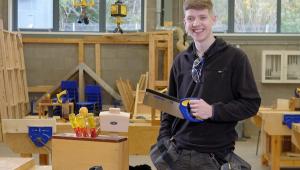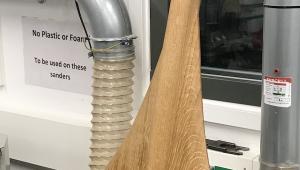Why your bandsaw blades fail...
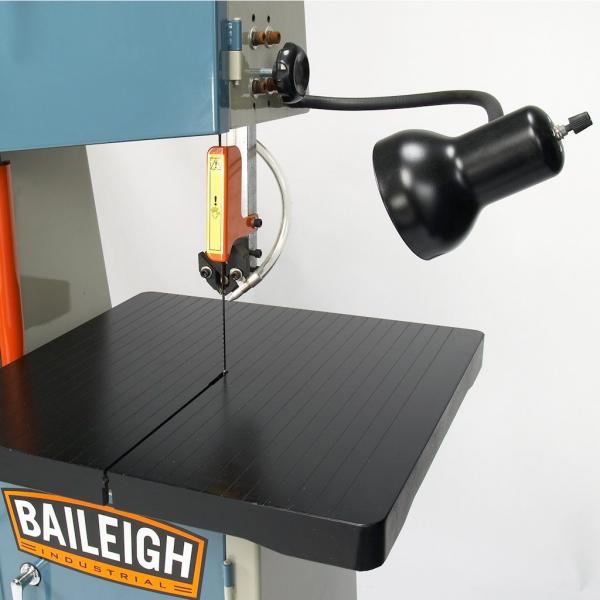
A quality bandsaw has the potential to be one of the most versatile tools in your workshop thanks to its ability to cut smoothly and precisely with relative ease. However, if it spends most of its time being broken and inactive, then it wonÕt be of much use to you at all. There are several reasons why your bandsaw may fail, including some that you might never have thought of, so weÕve decided to put together this list of potential problems in hopes that it can help you to get your machine back in full working order.
Scoring and/or general wear on the side of your bladeDamage to the side of your blade can occur for a number of reasons. If you see the side of your blade starting to wear or score, check the alignment of the blade guide. If it is out of alignment, then this is likely the cause of the damage. In addition to this, check the guide to see if it is worn or broken as a worn guide will not ride on the blade properly.
Worn, chipped, or broken teethWear can occur in a couple of different places on the teeth of your blade. If you notice wear on the tips and the corners, it could be because of your blade speed. If the blade speed is too fast, it will generate a lot of heat at the tips of the teeth, which causes them to wear a lot quicker than usual. If you notice wear on the sides of the teeth, they might be hitting the guides or a part of the machine.
If your teeth are chipped or broken, then it could be because you didnÕt properly break in the blade. This isnÕt something that you can fix, but it is something that you can bear in mind when buying new blades in future. However, if you know that you did correctly break in your blades and that isnÕt the problem, itÕs possible that your feed rate is too high. While increasing your feed rate does increase your productivity in the short term, it significantly reduces the life of your blades, so you should be careful.
Cracks in the gulletsThere are countless ways that you could end up with cracks in your gullets, but most of them stem from pushing the blade past its limits. If you are experiencing this problem, make sure you are not using excessive:
- Blade speed
- Blade tension
- Feed rate
- Feed pressure
Tooth stripping might be the most frequent problem that people tend to have with their bandsaw blades. This is due to the fact that there are so many ways that it could happen. Much like broken teeth, stripped teeth can also be caused by an improper break in or an excessive feed rate, but they could also be caused by:
- Teeth hitting the machine
- Poor positioning of materials
- Wrong coolant (or lack thereof)
- Chip brush not cleaning properly
- Having the wrong tooth pitch
Debris from the material that you are cutting could be getting itself stuck in your gussets, causing your blade to lose performance. To avoid this, you need to ensure that your brush is properly positioned and is cleaning properly. If the brush is too far from the teeth, then it will not be able to reach all the chips, but if it is too close, then it may wear the blade. Ideally, you want your brush to touch the deepest part of your gullet.
Note: Debris in your gullets can do more than just damage your blades. If a piece dislodges, it could also fall and damage the internal mechanisms of the machine.
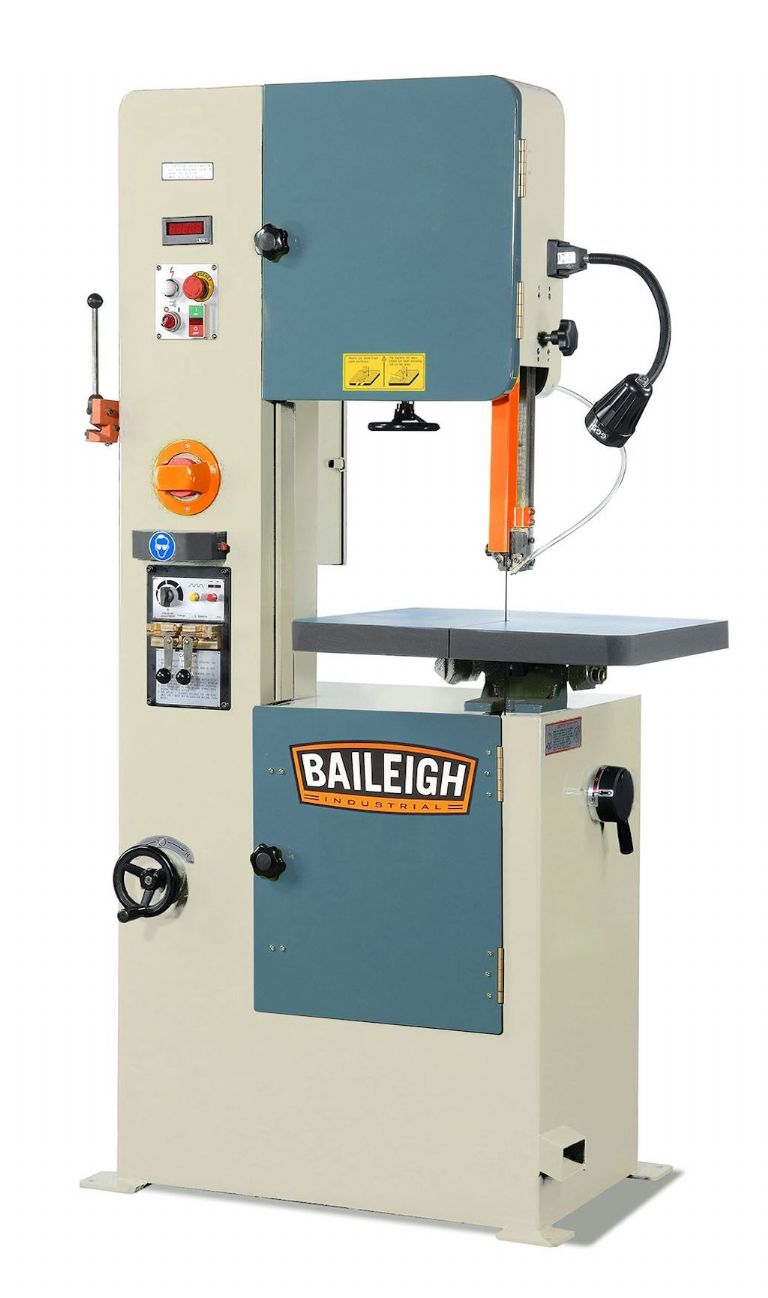
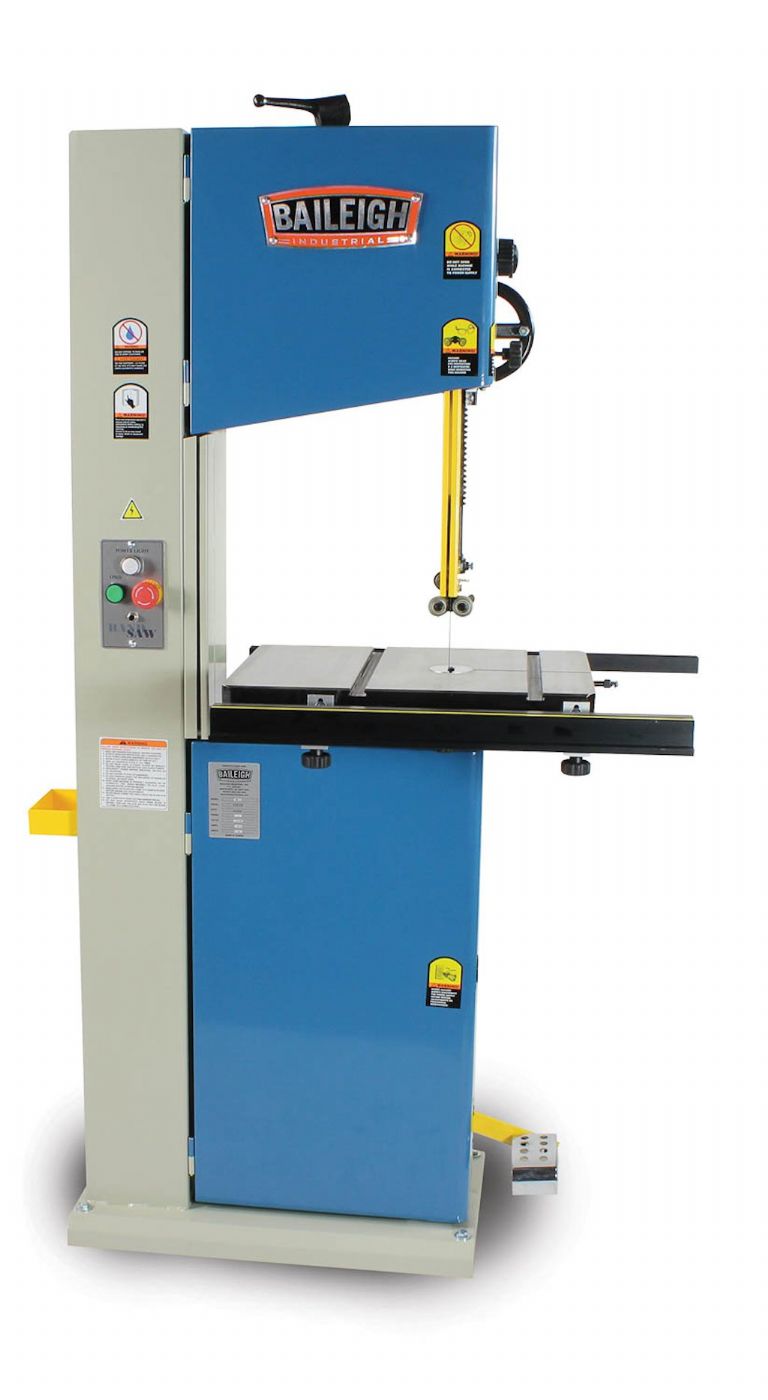 The BSV-20VS vertical bandsaw features variable-speed, 3-19mm blade width, 314mm maximum thickness and a 521mm throat depth The WBS-14 vertical bandsaw benefits from a patented blade guide system that helps keep the blade perfectly aligned for precise cuts
FURTHER INFO
The BSV-20VS vertical bandsaw features variable-speed, 3-19mm blade width, 314mm maximum thickness and a 521mm throat depth The WBS-14 vertical bandsaw benefits from a patented blade guide system that helps keep the blade perfectly aligned for precise cuts
FURTHER INFO
To find out more about Taillight Industrial and their wide range of bandsaws and woodworking machinery, see the Baileigh Industrial website.
- Log in or register to post comments

